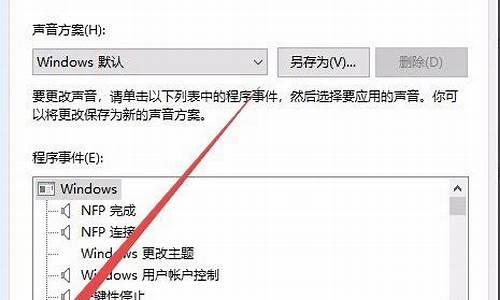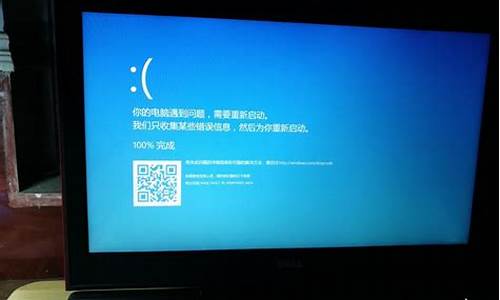2002年的电脑系统-01年的电脑系统
1.如何优化系统WIN XP使老旧的电脑可以使用?
2.电脑第一个系统是怎么创建出来的?
如何优化系统WIN XP使老旧的电脑可以使用?

老电脑只要有256的内存使用XP就不是很慢!
我推荐你使用XPSP1这个老版系统,SP1的速度比SP2好得多.
然后再进行一点点关闭消耗大量内存的功能就可以了.
1.我的电脑-属性-高级性能-设置-调为最佳性能.然后将背景改为无
2.使用超级兔子魔法设置,进入启动程序,删除启动项中其他的启动项只保留输入法.然后进入系统服务加载方案.
下面是我使用的方案
_______________________________________
[Main]
Program=Super Rabbit Magic Set
Version=V8.1
WindowsVersion=Windows XP
WinDir=C:\WINDOWS\
USERPROFILE=C:\Documents and Settings\Administrator
Date=2007-11-8
Time=23:01:14
Service=1
[ServiceList]
Max=84
1_Name=ALERTER
1_Status=1
1_StartType=4
2_Name=ALG
2_Status=1
2_StartType=4
3_Name=APPMGMT
3_Status=1
3_StartType=4
4_Name=AUDIOSRV
4_Status=4
4_StartType=2
5_Name=BITS
5_Status=1
5_StartType=4
6_Name=BROWSER
6_Status=1
6_StartType=4
7_Name=CISVC
7_Status=1
7_StartType=4
8_Name=CLIPSRV
8_Status=1
8_StartType=4
9_Name=COMSYSAPP
9_Status=4
9_StartType=2
10_Name=CRYPTSVC
10_Status=4
10_StartType=3
11_Name=DCOMLAUNCH
11_Status=4
11_StartType=2
12_Name=DHCP
12_Status=1
12_StartType=3
13_Name=DMADMIN
13_Status=1
13_StartType=3
14_Name=DMSERVER
14_Status=1
14_StartType=3
15_Name=DNSCACHE
15_Status=1
15_StartType=4
16_Name=ERSVC
16_Status=1
16_StartType=4
17_Name=EVENTLOG
17_Status=1
17_StartType=2
18_Name=EVENTSYSTEM
18_Status=4
18_StartType=2
19_Name=FASTUSERSWITCHINGCOMPATIBILITY
19_Status=1
19_StartType=4
20_Name=HELPSVC
20_Status=1
20_StartType=4
21_Name=HIDSERV
21_Status=1
21_StartType=4
22_Name=HTTPFILTER
22_Status=1
22_StartType=4
23_Name=IMAPISERVICE
23_Status=1
23_StartType=4
24_Name=LANMANSERVER
24_Status=1
24_StartType=3
25_Name=LANMANWORKSTATION
25_Status=4
25_StartType=2
26_Name=LMHOSTS
26_Status=1
26_StartType=4
27_Name=MESSENGER
27_Status=1
27_StartType=4
28_Name=MNMSRVC
28_Status=1
28_StartType=4
29_Name=MSDTC
29_Status=1
29_StartType=4
30_Name=MSISERVER
30_Status=1
30_StartType=3
31_Name=NETDDE
31_Status=1
31_StartType=3
32_Name=NETDDEDSDM
32_Status=1
32_StartType=3
33_Name=NETLOGON
33_Status=1
33_StartType=4
34_Name=NETMAN
34_Status=4
34_StartType=2
35_Name=NLA
35_Status=1
35_StartType=4
36_Name=NTLMSSP
36_Status=1
36_StartType=3
37_Name=NTMSSVC
37_Status=1
37_StartType=3
38_Name=PLUGPLAY
38_Status=4
38_StartType=2
39_Name=POLICYENT
39_Status=1
39_StartType=4
40_Name=PROTECTEDSTORE
40_Status=4
40_StartType=3
41_Name=RASAUTO
41_Status=1
41_StartType=3
42_Name=RASMAN
42_Status=4
42_StartType=3
43_Name=RDSESSMGR
43_Status=1
43_StartType=3
44_Name=REMOTEACCESS
44_Status=1
44_StartType=3
45_Name=REMOTEREGISTRY
45_Status=1
45_StartType=4
46_Name=RFWPROXYSRV
46_Status=4
46_StartType=3
47_Name=RFWSERVICE
47_Status=4
47_StartType=2
48_Name=RPCLOCATOR
48_Status=1
48_StartType=3
49_Name=RPCSS
49_Status=4
49_StartType=2
50_Name=RSCCENTER
50_Status=4
50_StartType=2
51_Name=RSRAVMON
51_Status=4
51_StartType=2
52_Name=RSVP
52_Status=1
52_StartType=3
53_Name=SAMSS
53_Status=4
53_StartType=2
54_Name=SCARDSVR
54_Status=1
54_StartType=4
55_Name=SCHEDULE
55_Status=1
55_StartType=4
56_Name=SECLOGON
56_Status=4
56_StartType=2
57_Name=SENS
57_Status=4
57_StartType=2
58_Name=SHAREDACCESS
58_Status=1
58_StartType=4
59_Name=SHELLHWDETECTION
59_Status=4
59_StartType=2
60_Name=SPOOLER
60_Status=1
60_StartType=4
61_Name=SRSERVICE
61_Status=1
61_StartType=4
62_Name=SSDPSRV
62_Status=1
62_StartType=4
63_Name=STISVC
63_Status=1
63_StartType=4
64_Name=SWPRV
64_Status=1
64_StartType=4
65_Name=SYSMONLOG
65_Status=1
65_StartType=4
66_Name=TAPISRV
66_Status=4
66_StartType=3
67_Name=TERMSERVICE
67_Status=1
67_StartType=4
68_Name=THEMES
68_Status=1
68_StartType=4
69_Name=TLNTSVR
69_Status=1
69_StartType=4
70_Name=TRKWKS
70_Status=1
70_StartType=4
71_Name=UMWDF
71_Status=4
71_StartType=2
72_Name=UPNPHOST
72_Status=1
72_StartType=3
73_Name=UPS
73_Status=1
73_StartType=4
74_Name=VSS
74_Status=1
74_StartType=4
75_Name=W32TIME
75_Status=1
75_StartType=4
76_Name=WEBCLIENT
76_Status=1
76_StartType=3
77_Name=WINMGMT
77_Status=4
77_StartType=2
78_Name=WMDMPMSN
78_Status=1
78_StartType=4
79_Name=WMI
79_Status=1
79_StartType=3
80_Name=WMIAPSRV
80_Status=1
80_StartType=3
81_Name=WSCSVC
81_Status=4
81_StartType=2
82_Name=WUAUSERV
82_Status=1
82_StartType=4
83_Name=WZCSVC
83_Status=1
83_StartType=4
84_Name=XMLPROV
84_Status=1
84_StartType=4
__________________
保存为*.ini
电脑第一个系统是怎么创建出来的?
电脑第一个系统---DOS。有Ms-dos,Pc-dos等
DOS的历史
1.14年4月,Intel推出8位芯片8080。这块芯片的体积和性能,已经能够满足开发微型电脑的需要,标志微机时代即将来临。
2.15年初,MITS电脑公司推出了基于8080芯片的Altair 8800微机,这是人类历史上第一台PC(个人电脑)。
3.15年1月,Popular Electronics杂志以封面报道的形式,介绍了Altair 8800。这是历史上第一篇关于微机的新闻报道。
4.22岁的西雅图程序员Paul Allen看到了这一期杂志,深感震动,就把它拿给好友20岁的Bill Gates看。
两人决定为Altair 8800开发一套BASIC解释器,卖给MITS公司。15年7月,他们用这个产品成立了微软公司。
5.15年,另一家公司Digital Research为Altair 8800开发了操作系统CP/M。它很快成为Intel 8080芯片的标准操作系统。(上图为CP/M的运行界面。)
6.18年,Intel公司推出历史上第一块16位芯片8086。
7.19年,一家名叫Seattle Computer Products(SCP)的公司,决定开发基于8086芯片的个人电脑。它原用CP/M作为操作系统,但是此时CP/M还未完成针对16位芯片的升级。
8.1980年4月,足足一年之后,CP/M还是没有推出16位的版本。SCP决定不等了,自己开发16位操作系统。24岁的程序员Tim Paterson负责这个任务。
9.1980年8月,Tim Paterson完成了原始的操作系统,取名为QDOS,意思是"简易的操作系统"(Quick and Dirty Operating System)。在设计上,他充分借鉴了CP/M,用户界面和编程接口几乎完全一样,这使得CP/M上的应用程序,可以直接在QDOS上运行。他做出的最大改变,就是为QDOS引入了微软公司BASIC解释器的FAT文件系统。
10.1980年10月,IBM公司决定推出基于Intel 8086芯片的PC。
它找到Digital Research公司,要求获得授权使用CP/M系统。但是,协议没有谈成。于是,IBM又去找微软公司,要求微软为它提供操作系统。当时,微软没有操作系统产品,但是Bill Gates知道SCP公司正在开发QDOS。微软支付2.5万美元给SCP,获得了QDOS的使用许可。(上图为DOS的运行界面。)
11.1981年7月,微软对IBM PC的整个设计已经相当了解,Bill Gates意识到未来PC市场的巨大规模,决定不再使用许可证模式,而是直接把QDOS买下来。这又花费了微软公司5-7万美元。
与此同时,Tim Paterson也从SCP辞职了,微软雇用了他。
12.1981年7月27日,协议达成。QDOS成了微软的财产,名称正式改为MS-DOS。微软对DOS的解释是"磁盘操作系统"(Disk Operating System)。
这一天,就是微软公司DOS操作系统的诞生纪念日。
13.1981年8月12日,IBM公司正式推出个人电脑产品IBM PC,使用的操作系统是MS-DOS 1.14版。
14.1983年3月8日,IBM又推出增强版IBM PC/XT,第一次在PC上配备了硬盘,使用的操作系统是MS-DOS 2.0版。
15.年,IBM推出了下一代个人电脑IBM PC/AT,操作系统是MS-DOS 3.0版。
16.1989年,MS-DOS 4.0版发布,开始支持鼠标和图形界面。
此时,微软已经准备终结DOS这个产品了。微软公开表态,用户可以考虑放弃DOS,转而使用由IBM和微软共同开发的OS/2操作系统。
但是不久以后,Windows 3.0获得巨大成功,微软也就不再考虑OS/2了。
17.1991年,MS-DOS 5.0版发布,内置QBasic编程环境。这是MS-DOS最后一次作为单独产品出现。
18.1993年,MS-DOS 6.0版发布,具备了磁盘压缩技术。
19.1995年,MS-DOS 7.0版支持FAT32文件系统,它随同Windows 95一起发布。
20.2000年9月14日,MS-DOS的最后一个版本8.0版发布,只用于Windows XP系统的启动盘。至此,微软公司的DOS开发正式宣告全部结束。
声明:本站所有文章资源内容,如无特殊说明或标注,均为采集网络资源。如若本站内容侵犯了原著者的合法权益,可联系本站删除。












